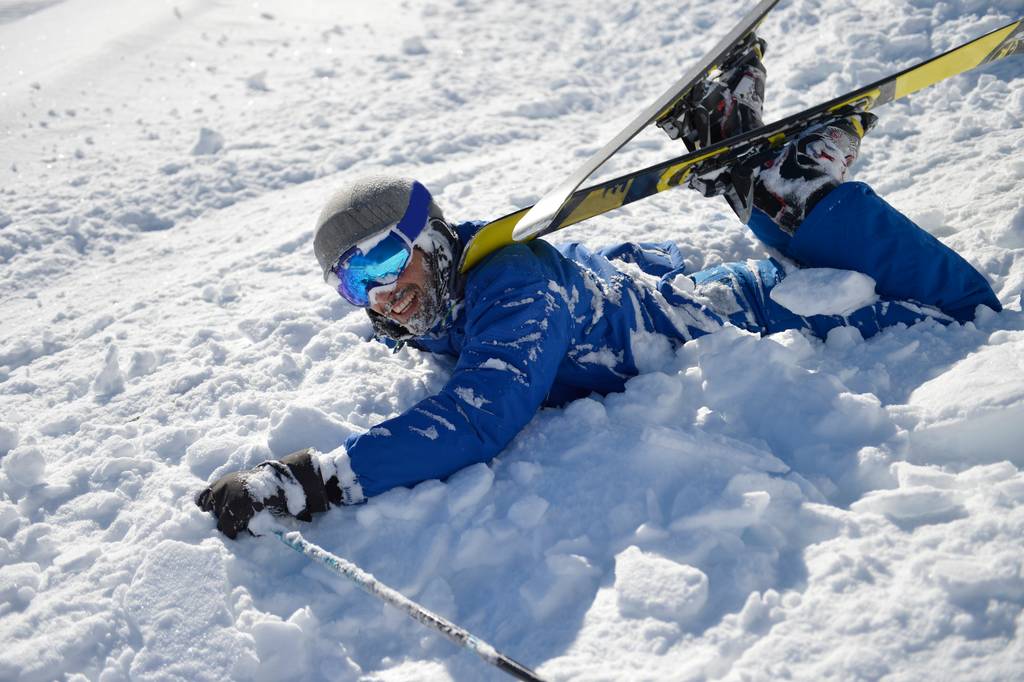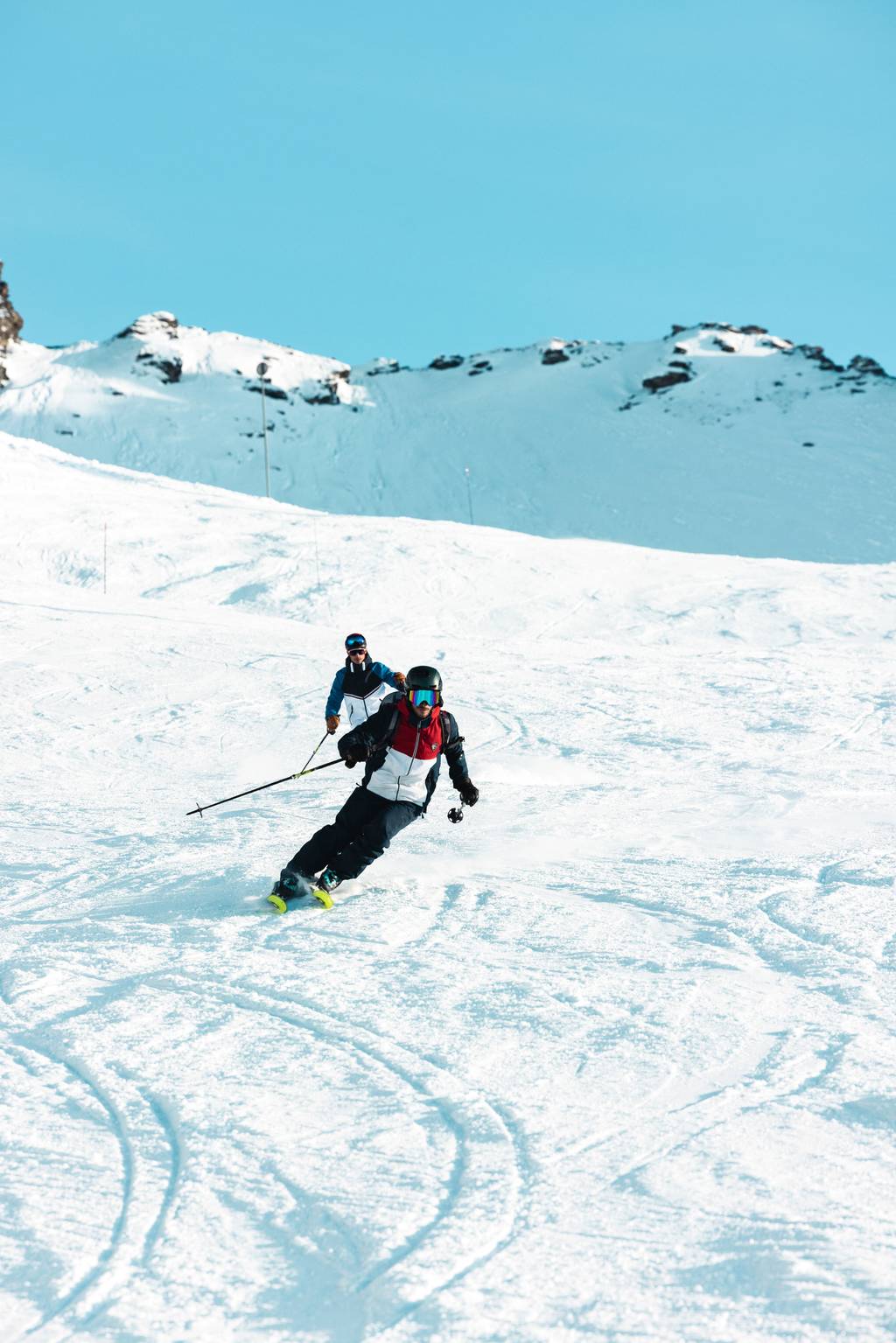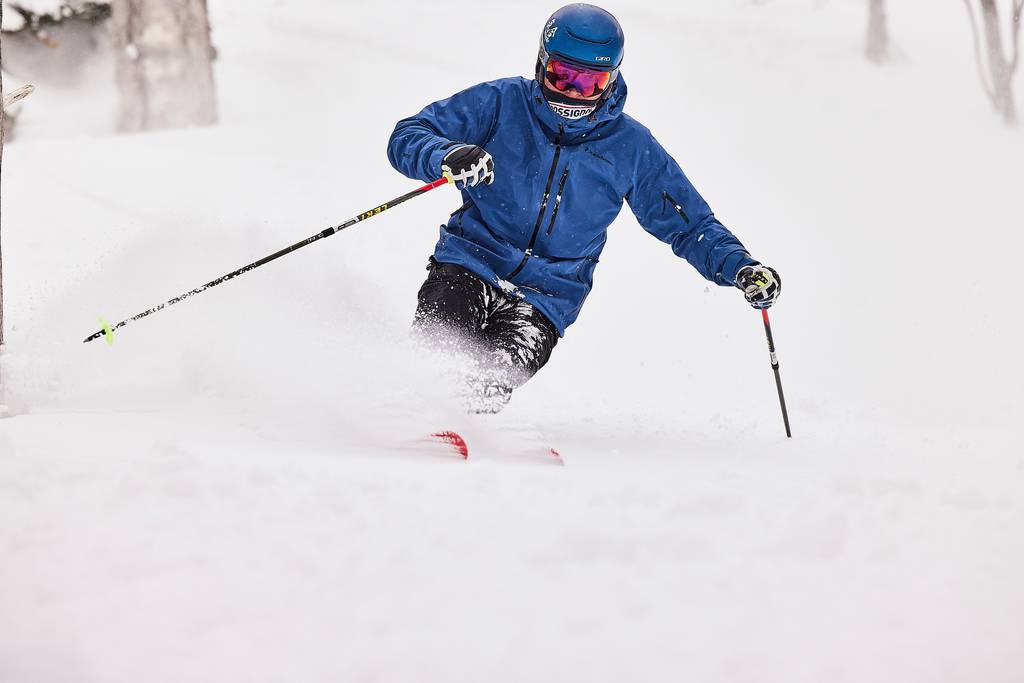Skiing in deep powder requires having the right gear. Even though you can go as complex and expensive as you want, don’t forget about the basics – your skis and outerwear.
Powder skis tend to be broader and longer compared to piste skis, ranging from around 110 mm to 140 mm in waist width. The reason behind the waist width is that you get more surface area.
Not only that but most powder skis utilize a camber profile that improves your float while in powder. That can include a rocker-raised tip and tail or even reverse camber. With powder skis, the tips and tails are higher than the contact point and form a sort of dished shape. All of these things combined will help you to manoeuvre better in the powder.
When it comes to outerwear, keep in mind that deep powder skiing requires your clothes to be waterproof and breathable. Powder snow can and will easily stick to your jacket and seep into the fibres, making you cold, wet, and most likely miserable.
Also, as powder skiing requires a lot of hard work, you’ll likely be working up a sweat, which is why your ski jackets and pants should breathe. That will help with temperature regulation while wicking away moisture and keeping you dry and cozy.


